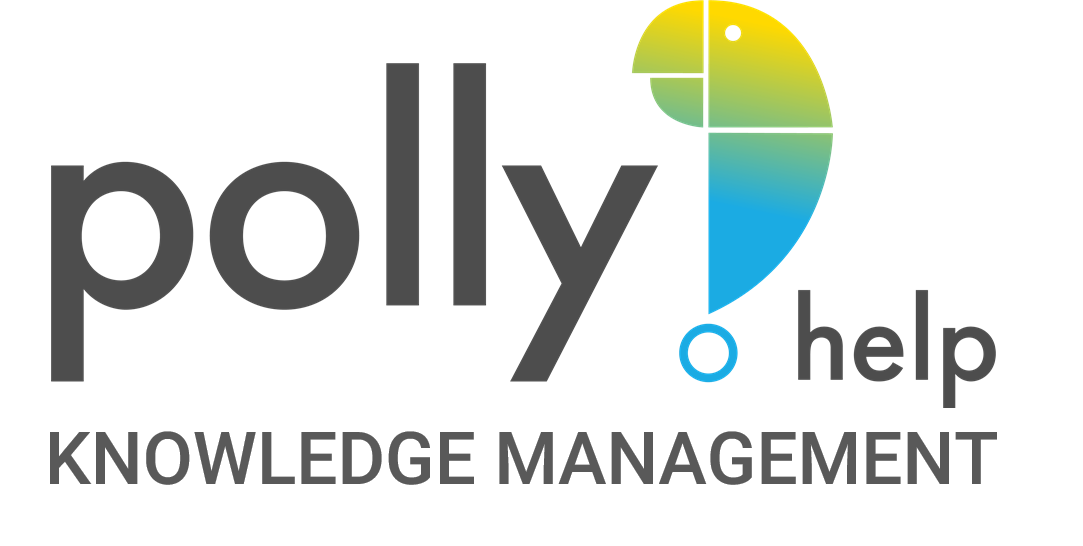Operations manual software represents an innovative tool designed to simplify the creation, updating, and distribution of operational manuals. These digital alternatives to traditional paper-based manuals offer a centralized repository that can be accessed in real time, enabling businesses to achieve greater efficiency and consistency in their operational procedures. By utilizing automated operations manual software, organizations can significantly reduce the time and resources required for manual updates, and ensure all employees are working with the most current information. Streamlined operations manual software solutions integrate with various business tools, promoting seamless collaboration and real-time updates which can be effortlessly disseminated across departments.
Cloud-based operations manual software provides the added advantage of accessibility from virtually anywhere, enhancing the flexibility and responsiveness of an organization’s operations. Embracing these powerful and efficient operations manual software solutions can propel businesses towards increased productivity, accuracy, and adaptability in maintaining their operational procedures.
Key Takeaways
- Operations manual software simplifies the creation, updating, and distribution of operational manuals.
- Automated operations manual software reduces time and resource requirements for maintaining procedures.
- Streamlined solutions promote seamless collaboration and real-time updates across departments.
- Cloud-based operations manual software offers remote accessibility and increased flexibility.
- The integration of operations manual software can lead to increased productivity, accuracy, and adaptability.
Understanding Operations Manual Software
Operations manual software serves as a digital management tool to assist businesses in organizing and communicating their functional processes, procedures, and standards effectively. This powerful software delivers numerous advantages, including user-friendly interfaces, seamless operations manual updates, and improved company-wide alignment. Discover the benefits and key features of digital operations manual software to revolutionize your business process documentation and management.
What is Operations Manual Software?
Operations manual software is a comprehensive digital solution designed to simplify the creation, maintenance, and distribution of a company’s operational manuals. These digital tools offer a user-friendly operations manual software platform for effortless customization while ensuring that every aspect of a company’s operational procedures is documented accurately and effectively.
Benefits of Digital Operations Manual Software
Transitioning to digital operations manual software yields numerous benefits for businesses aiming for enhanced clarity and streamlined management of their functional processes. As a versatile operations manual management tool, the software reduces the risk of errors and ensures improved alignment across the entire organization. Some standout benefits include:
- Efficient and accessible information sharing
- Secure cloud-based storage for easy access and real-time updates
- Reduced time and resources wasted on manual updates
- Improved organization-wide process standardization
Key Features of Efficient Operations Manual Software
To maximize the benefits of digital operations manual software, it is essential to identify its core features, which include:
- Real-time updates: Timely and quick updates ensure the most current operational procedures are accessible to all employees.
- Secure cloud-based storage and access: Cloud-based storage provides enhanced data security and enables swift access from virtually anywhere.
- Integrated visuals: Visual aids such as flowcharts and diagrams improve comprehension and support complex procedure implementation.
- Revision history tracking: Monitoring changes and revision histories help maintain process accuracy and adherence to compliance requirements.
By employing efficient operations manual software with these key features, businesses can not only streamline their documentation process but also mitigate risks associated with outdated information, ultimately achieving higher compliance and operational excellence.
Transitioning from Traditional to Digital: A Paradigm Shift
The shift from traditional paper-based manuals to digital operations manual software marks a profound change in organizational documentation. Digital manuals offer dynamic, interactive, and easily updateable information hubs, as opposed to static and often outdated paper documents. This transition not only streamlines the maintenance and dissemination of operational knowledge within a company but also supports environmental sustainability by reducing paper waste.
Cloud-based operations manual software further underpins this paradigm shift by ensuring operational data is secure yet readily accessible across various devices and locations, fostering remote collaboration and real-time information sharing. This evolution towards digital means translates into more efficient operations manual practices and tools that adapt swiftly to changes in business operations or regulations.
To illustrate the impact of this transition, consider the following comparison between traditional and digital operations manual practices:
| Traditional Manuals | Digital Operations Manual Software |
|---|---|
| Paper-based, static documents | Dynamic, interactive, and updateable digital hubs |
| Limited accessibility and distribution | Real-time access and sharing across departments and locations |
| Increased paper waste and environmental impact | Environmentally friendly due to reduced paper usage |
| Prone to outdated information and inconsistencies | Automated updates and agile adaptations to changes |
| Limited collaboration possibilities | Enhanced remote collaboration and communication |
Embracing digital operations manual software can significantly transform an organization’s operations, ensuring business processes and documentation remain up-to-date, accessible, and adaptable to ever-changing requirements.
The Role of Operations Manual Software in Employee Training
Operations manual software solutions are essential in shaping a company’s employee training and development initiatives. By integrating the onboarding experience, standardized operational procedures, and preserving institutional knowledge, these digital tools foster a dynamic and productive workforce.
Accelerating the Learning Curve
Streamlined operations manual software plays a pivotal role in hastening the learning curve for new hires. By offering access to detailed procedural documentation, they aid employees in quickly comprehending their responsibilities and acquainting themselves with company processes. This accelerated onboarding ultimately contributes to a more efficient and agile workforce.
Ensuring Consistency Across Departments
Maintaining uniformity and process standardization across departments is a key advantage of implementing operations manual software solutions. Through the centralized dissemination of information, these digital tools help prevent departmental silos and promote a cohesive work environment. By doing so, employees can appreciate the broader organizational context and understand the significance of adhering to established procedures.
Knowledge Preservation Through Digital Manuals
Digital operations manuals serve as vital repositories for preserving an organization’s valuable institutional knowledge. This is particularly crucial during personnel changes to mitigate the loss of expertise and ensure operational continuity. Digital manuals capture the collective wisdom of a company, aiding in the transfer of knowledge throughout its journey, and sustaining the organization’s institutional memory.
Automated Operations Manual Software: Enhancing Process Visibility
Automated operations manual software is an invaluable resource, enhancing process visibility and operational efficiency across the board. It allows organizations to clearly map out their workflows, ensuring every team member understands the intricacies of internal processes. With features such as automated updates and notifications, operations manual software solutions can keep all employees apprised of the latest procedural changes and requirements.
The power of automation extends to simplifying complex processes into digestible, step-by-step instructions, making it easier to identify bottlenecks or areas for improvement. This leads to a more transparent and accountable operational environment, ultimately contributing to the overall performance and success of the business.
Implementing this technology enables businesses to:
- Maintain current and accurate information on procedures and policies.
- Reduce errors and redundancies in workflows.
- Promote collaboration and knowledge sharing among team members.
- Ensure compliance with industry standards and regulations.
In conclusion, the use of automated operations manual software significantly enhances process visibility throughout an organization, leading to increased operational efficiency and overall success.
Incorporating Visual Elements with Cloud-Based Operations Manual Software
Cloud-based operations manual software has revolutionized the way in which companies create and manage their operational documents by incorporating visual elements. These visual aids, which include process maps, flowcharts, and other diagrams, substantially enhance comprehension of complex procedures, making them more user-friendly for employees.
Accessibility is further improved as these visuals can be easily updated and shared via cloud-based platforms, ensuring all personnel have instant access to the latest procedural guidelines. Visual elements also serve as effective training tools, simplifying the absorption of new information and thereby reducing potential operational errors. The adoption of cloud-based solutions matches the pace of modern business, providing flexibility and scalability to operations manual management.
Consider the following benefits that come from integrating visual elements in cloud-based operations manual software:
- Enhanced comprehension of complex procedures
- Reduced risk of misunderstandings and operational errors
- Increased employee engagement due to visually appealing content
- Efficient knowledge transfer during employee training
- Seamless updating and sharing of visual materials
Below is a table summarizing the advantages of visual representations compared to traditional text-only documentation in operations manuals:
| Aspect | Visual Representation | Text-Only Documentation |
|---|---|---|
| Comprehension | Easy to visualize and digest complex procedures | May involve lengthy, descriptive narratives |
| Employee Engagement | Visually appealing, more likely to engage users | Heavy reliance on text, may be less engaging to users |
| Updating and Sharing | Simple and efficient due to cloud-based sharing | Manual updates required, potentially slower communication |
| Employee Training | Visual aids improve knowledge transfer and retention | Text-based learning may be more challenging or time-consuming |
| Error Prevention | Visual clarity reduces misunderstandings and errors | Excessive text may lead to misinterpretation or confusion |
Implementing user-friendly operations manual software, equipped with various visual elements and cloud-based functionality, significantly contributes to smoother and more effective business operations, cohesive employee training, and overall organizational success.
Crafting Your Business Policies Within an Operations Manual
Creating an operations manual is a strategic approach to defining business policies, standards, and procedures that form the backbone of an organization’s operational framework. Companies can articulate their approach to various business tasks, as well as employee behaviors and expectations within these documents. This promotes a culture of attentiveness and responsibility among all levels of the workforce. Operations manual software solutions can streamline this process and ensure companies stay compliant with industry legislations and standards.
Defining Standards and Procedures
Implementing a well-crafted operations manual requires the definition and documentation of standards and procedures that guide employees in their day-to-day work. This includes workflows, task responsibilities, and guidelines for workplace conduct. To create a comprehensive and user-friendly manual, businesses can utilize operations manual software solutions, which make it easier to design, update, and manage these essential documents.
Alignment with Legal and Compliance Requirements
One of the key aspects of an effective operations manual is its alignment with legal and compliance requirements. Operations manual software solutions enable companies to integrate all relevant legislative and regulatory mandates directly into their operational policies and procedures. A well-structured manual not only serves as an instructional guide for staff but also as a defense mechanism against potential legal challenges by showcasing proactive compliance efforts.
By tailoring business policies with the help of operations manual software, organizations can ensure that they adhere to essential legal and compliance requirements, mitigate potential risks, and foster a responsible work culture.
Streamlined Operations Manual Software and Organizational Structure
Streamlined operations manual software plays an integral role in documenting and maintaining an up-to-date company hierarchy. By providing a clear and accessible representation of organizational structure, employees can easily identify their position within the larger business context and understand their individual contributions to the company’s goals. In addition to organizational charts, this software also allows for comprehensive job descriptions and quick access to contact details, enhancing communication and collaboration across the company.
Maintaining an Updated Company Hierarchy
With streamlined operations manual software, it is easier than ever to maintain and update a company’s hierarchical structure. This software enables organizations to quickly make changes to their hierarchy, ensuring that employees have the latest information on reporting relationships and departmental structures. In addition to providing a visual representation of the company hierarchy, this software also aids in the effective tracking of personnel changes, preventing any confusion regarding employee roles and responsibilities.
Detailing Roles and Responsibilities
One of the key advantages of streamlined operations manual software is its ability to detail the roles and responsibilities of employees in a clear and concise manner. By providing comprehensive job descriptions, the software ensures that employees fully understand their responsibilities, thereby fostering an environment of accountability and efficient communication. In addition to job descriptions, the software also includes contact information and reporting relationships, further promoting collaboration and transparency across the organization.
Overall, streamlined operations manual software is a valuable asset for any organization looking to effectively manage and maintain their company hierarchy and facilitate the clear delineation of roles and responsibilities. By promoting clear communication and collaboration, this software supports the efficient functioning of an organization, ultimately contributing to its success.
Preparing for Emergencies: Contingency Plans in Operations Manuals
Operations manuals are not merely repositories for routine procedures; they also serve as critical resources for contingency planning and emergency response. Preparing for unexpected events, such as technical failures, natural disasters, or security breaches, requires the identification and documentation of actionable steps within the operations manual. Mapping out emergency procedures ensures that employees have a clear understanding of the actions required to minimize impact, maintain safety, and restore normal operations.
Operations manual software solutions enable the creation and maintenance of comprehensive, agile plans that can be quickly revised and disseminated in times of crisis, underpinning the resilience and preparedness of the organization. Some key elements of effective contingency plans within operations manuals include:
- Clear action steps and responsibilities for each team member
- Communication protocols, including backup communication methods
- Resource requirements and locations for essential equipment
- Recovery and business continuity strategies
- Regular reviews and updates to the plan based on organizational changes or lessons learned from previous incidents
To illustrate the benefits of effectively preparing for emergencies and having well-documented contingency plans, consider the table below comparing the typical outcomes of organizations with and without robust emergency preparedness:
| Organizations with Robust Contingency Plans | Organizations without Contingency Plans |
|---|---|
| Quick and effective emergency response | Delayed or disorganized response to emergencies |
| Minimal disruption to operations | Prolonged interruption of business activities |
| Improved safety for employees and stakeholders | Potential harm to employees and stakeholders |
| Informed and confident staff in crisis situations | Confusion and anxiety among staff members |
| Enhanced reputation for effective risk management | Potential damage to organizational reputation |
In conclusion, incorporating contingency plans into operations manuals greatly contributes to an organization’s ability to respond effectively to emergencies. Through the use of operations manual software solutions, businesses can ensure that their emergency preparedness plans are up-to-date, comprehensive, and readily accessible to all employees when needed the most.
User-Friendly Operations Manual Software Solutions for Enhanced Accessibility
Embracing user-friendly operations manual software solutions significantly elevates manual accessibility for organizations, such that employees can readily access vital information without undue complexity. Designed to be intuitive and simple to use, these solutions provide optimal user experience through:
- Clear navigation
- Searchable databases
- Responsive designs for various devices, like smartphones and tablets
By prioritizing user experience, businesses are not only ensuring that their operational manuals are read, but also actively utilized as resources for daily tasks and decision-making. Incorporating feedback mechanisms within the software facilitates continuous improvement of the manuals, guaranteeing ongoing relevance and utility for the workforce.
Enhanced accessibility also fosters a more inclusive work environment, as user-friendly operations manual software solutions cater to diverse learning styles and preferences. This adaptability drives better comprehension, retention, and application of knowledge, resulting in higher engagement and performance.
Ultimately, investing in user-friendly operations manual software solutions with enhanced accessibility sets the stage for a well-informed, productive workforce capable of smoother, more efficient operations.
Common Pitfalls in Developing Operations Manuals and How to Avoid Them
Creating effective and comprehensive operations manuals is crucial for any organization’s success. However, there are some common pitfalls that businesses should be aware of during the development process. By understanding these pitfalls and employing strategies to avoid them, organizations can ensure their manuals remain practical, helpful, and up-to-date.
Avoiding Overly Complex Language
One common mistake made when developing operations manuals is the use of overly complex language. This can create barriers to understanding and hinder the manual’s overall effectiveness. To avoid this pitfall, clear and concise communication should be prioritized. Replace jargon and technical terminology with simple, straightforward language that is accessible to all employees. Additionally, it is helpful to provide definitions of essential terms for easy reference.
Regular Updates and Revisions
Failing to regularly update and revise operations manuals can lead to outdated or incorrect information, which can negatively impact business operations. Establishing a schedule for regular updates and revisions is vital in maintaining the relevance and accuracy of manuals. This process should include the assessment of any changes in regulations, industry standards, or organizational procedures, as well as the incorporation of new best practices.
Importance of User Feedback in Manual Development
User feedback is essential in ensuring the practicality and usability of operations manuals. Empower employees to share their insights and feedback, providing a crucial viewpoint that can identify areas for improvement. Develop a system to capture feedback from end-users, and prioritize their input during the update and revision process. By incorporating user feedback, companies can create a more effective and comprehensive operations manual that caters to the needs of the organization.
Operations Manual Software Solutions: Case Studies and Success Stories
Operations manual software solutions have amassed a remarkable track record of transforming businesses through numerous case studies and success stories. These real-world examples showcase the impact of manual software solutions in significantly reducing onboarding times, cutting operational errors, and enhancing overall business efficiency:
- Companies have reported improvements in managing complex processes, adhering to compliance standards, and fostering better workplace understanding.
- These success stories serve as a testament to the value of operations manual software in driving organizational success and resilience in various industries.
By analyzing these case studies, businesses can glean best practices and strategic insights applicable to their own operations manual initiatives:
- A leading multinational automotive company used operations manual software to streamline their compliance management and significantly reduced audit preparation time. The software ensured the company’s global operations abided by industry standards and various regional regulations, minimizing compliance risks and financial penalties.
- A renowned healthcare provider implemented operations manual software to standardize across their numerous facilities, leading to decreased operational errors, improved patient care, and increased staff retention. The software facilitated staff training and policy adherence, ensuring high levels of compliance and safety.
- An international manufacturing firm utilized operations manual software to maintain and improve product quality and employee safety procedures. By harmonizing standard operating procedures across departments and locations, the company effectively identified and addressed operational bottlenecks, optimizing both efficiency and overall performance.
In conclusion, operations manual software case studies and success stories reveal the clear benefits of implementing these solutions in diverse industries. As companies strategically invest in such software, they reap tangible rewards in terms of enhanced efficiency, compliance, and overall operational success.
Conclusion
In conclusion, operations manual software stands as a cornerstone of modern operational efficiency, providing a platform for businesses to document, update, and communicate vital procedural knowledge effectively. The transition from traditional methods to digital solutions aligns with the demands of a fast-paced, ever-evolving business landscape. By fostering rapid employee training, standardizing processes across departments, enhancing process visibility, and preparing for emergencies, operations manual software solutions solidify an organization’s foundation.
With user-friendly interfaces and the potential to streamline and scale operations, efficient operations manual software solutions prove to be a value-added tool for businesses aiming to maintain a competitive edge. These software innovations not only contribute to enhanced productivity but also provide a means to safeguard organizational knowledge and future-proof the business against evolving industry demands and regulations.
Ultimately, adopting a digital operations manual software strategy is essential in today’s rapidly changing business environment. It empowers organizations to capitalize on the many benefits of streamlined documentation management and positions them for long-term success in an increasingly competitive market.
FAQ
What is Operations Manual Software?
Operations Manual Software is a digital management tool designed to help businesses create, update, and distribute operational manuals more efficiently. It offers a centralized repository that allows organizations to maintain their internal policies, procedures, and standards with greater efficiency and consistency.
What are the benefits of digital operations manual software?
Digital operations manual software provides enhanced clarity, reduced risk of errors, improved company-wide alignment, real-time updates, secure cloud-based storage and access, and incorporation of visuals such as flowcharts for better understanding. The software also automates manual updates, saving time and resources.
What are the key features of efficient operations manual software?
Key features of efficient operations manual software include user-friendly interfaces, real-time updates, cloud-based storage and access, integrated visual elements, and the ability to track changes or revision histories. These features ensure that organizations maintain up-to-date and accurate operational documentation.
How does operations manual software aid in employee training?
Operations manual software plays a crucial role in employee training by providing access to detailed procedural documentation. This helps standardize the onboarding experience and train employees consistently across departments. It also preserves valuable institutional knowledge and fosters a cohesive work environment.
How does automated operations manual software enhance process visibility?
Automated operations manual software enhances process visibility by allowing organizations to clearly map out their workflows and ensure that every team member understands the intricacies of internal processes. It also simplifies complex processes into step-by-step instructions, making it easier to identify bottlenecks and areas for improvement.
What role does cloud-based operations manual software play in enhancing accessibility and incorporating visual elements?
Cloud-based operations manual software enables companies to incorporate visual elements, such as process maps and flowcharts, into their operational documentation. These visual aids improve comprehension and make procedures more user-friendly. Cloud-based platforms also provide easy updates and dissemination of these visuals, ensuring all personnel have instant access to the latest guidelines.
How do operations manual software solutions help with legal and compliance requirements?
Operations manual software solutions help companies integrate legal and compliance requirements into their operational policies, ensuring adherence to industry legislation and standards. A comprehensive manual serves as an instructional guide for staff and a defense mechanism against potential legal challenges by showcasing proactive compliance efforts.
What are some common pitfalls in developing operations manuals and how can they be avoided?
Common pitfalls in developing operations manuals include overly complex language, failure to update and revise manuals regularly, and neglecting user feedback. To avoid these issues, organizations should prioritize simplicity in language, schedule regular updates, and incorporate feedback mechanisms within their operations manual software.
Are there case studies and success stories that demonstrate the impact of operations manual software solutions?
Yes, numerous case studies and success stories showcase how operations manual software solutions have helped companies reduce onboarding times, decrease operational errors, and enhance overall business efficiency. By analyzing these examples, businesses can learn best practices and strategic insights to apply to their own operations manual initiatives.







